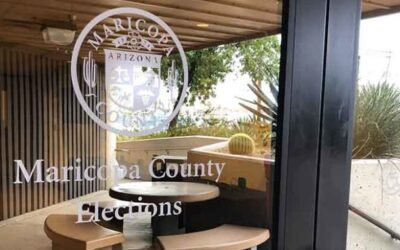By Staff Reporter |
The state spends billions more on wealthy students who attend public schools than through the Empowerment Scholarship Account (ESA), or universal school choice program, according to a new analysis of federal census data from the Goldwater Institute.
The study released earlier this month culminated data from the last five U.S. Census Bureau Household Pulse Surveys ranging from last year to this year assessing school enrollment types for K-12 children across various household incomes.
The Goldwater Institute found that together, the data revealed that nearly one-third of public school students came from households earning over $100,000, of which about half came from households earning over $150,000.
The study disclosed that the Census data, though aggregated, was limited as general approximations due to coming from sample sizes.
Over 80 percent of children from higher-income households enroll at taxpayer expense in Arizona public schools, at a much higher rate than the ESA funds. About 1.1 million students in all attend public schooling.
Goldwater estimated that the higher rate amounts to anywhere from $2 to $4 billion annually for children from households earning over $100,000, and anywhere from $1 to $2 billion for children from households earning over $150,000.
“[W]hen it comes to funding higher-income students in the public school, the state is being charged specifically for those students, whose collective presence in the public school system does add significant cost to the public school system: both variable and fixed costs, including the necessity to hire additional staff or construct or renovate for larger campuses,” read the report.
The minimum formula funding for one public school student is about $7,500 annually for a baseline. That number rises to $12,200 with the inclusion of other funds like district overrides, bonds, and school facilities funding. The minimum tops out at over $14,700 with the inclusion of federal funding.
By comparison, Goldwater reported that average ESA funds amount to about $7,400. These students also lose out on several sources of fixed and variable costs, such as the Classroom Site Fund, and those funds revert back to the public school system.
Overall, the institute estimated that it costs taxpayers 10 to 20 times more to educate students of wealthy families in public schools than it does for similarly-situated families in the ESA Program.
The Goldwater Institute issued the study on the heels of Governor Katie Hobbs’ January announcement of a budget plan to revoke ESA Program scholarships from nearly 50,000 students.
Aggregated data collected by Goldwater in the course of their research further suggested that about 20 percent of private schoolers came from households with an income under $50,000, while about 50 percent came from households with an income under $100,000.
As for homeschoolers, the institute found that nearly 60 percent of those students hailed from households with income levels under $100,000.
In addition to state and Census Bureau data, the report relied on research from the National Center for Education Statistics, Reason, and the U.S. Department of Agriculture.
AZ Free News is your #1 source for Arizona news and politics. You can send us news tips using this link.








